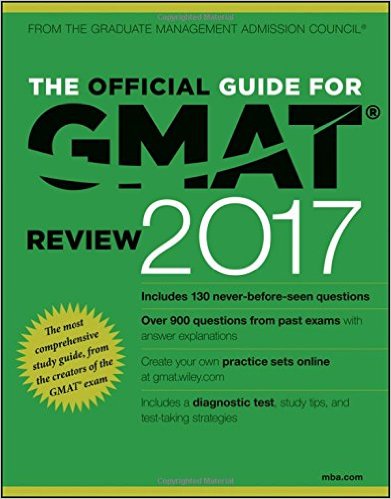About GMAT
The GMAT (Graduate Management Admission Test) is a three-and-one-half hour computer adaptive test (CAT). There are four sections in the test.
| Section |
|
Time |
| Writing Section |
Analysis of Argument Essay |
30 minutes |
| Quantitative Section |
37 Questions |
75 minutes |
| Verbal Section |
41 Questions |
75 minutes |
| Integrated reasoning |
|
30 minutes |
The writing section always begins the test. You will type your essay on the computer, using a very basic word processor.
Each question must be answered before you can go to the next question. Furthermore, you cannot return to a question once you go to the next question.
The GMAT is a standardized test. Each time it is offered, the test has, as close as possible, the same level of difficulty as every previous test. Maintaining this consistency is very difficult–hence the experimental questions (questions that are not scored). The effectiveness of each question must be assessed before it can be used on the GMAT. A problem that one person finds easy another person may find hard, and vice versa. The experimental questions measure the relative difficulty of potential questions; if responses to a question do not perform to strict specifications, the question is rejected.
About one quarter of the questions are experimental. The experimental questions can be standard mathematics, data sufficiency, reading comprehension, arguments, or sentence correction. You won’t know which questions are experimental.
Because the “bugs” have not been worked out of the experimental questions–or, to put it more directly, because you are being used as a guinea pig to work out the “bugs”–these unscored questions are often more difficult and confusing than the scored questions.
You ought to note that the GMAT is a Computer Adaptive Test (CAT) and therefore can only be taken on a computer.
How is the GMAT scored?
The GMAT score is separated into 3 different scores: one for the combined Verbal and Quantitative sections, one for the Analytical Writing Assessment and one for the Integrated Reasoning Section. The score bands are summarized in the table below:
GMAT EXAM WITH INTEGRATED REASONING
| GMAT Exam Section |
Score Range |
Intervals |
| Analytical Writing Assessment |
0.0 – 6.0 |
Intervals of 0.5 |
| Integrated Reasoning |
1 – 8 |
Intervals of 1 |
| Quantitative |
0 – 60 |
Intervals of 1. Scores <7 or >50 are extremely rare |
| Verbal |
0 – 60 |
Intervals of 1. Scores <9 or >44 are extremely rare |
| Total Score |
200-800 |
Intervals of 10. called from Verbal and Quantitative |
FAQ
How do I select a GMAT test date? 
The test can be taken on any day of the year except Sundays and public holidays (please contact us for specific dates). First find out the application deadlines for the graduate schools to which you are applying, then work backwards from your earliest deadline. Build some extra time into your planning process for unexpected delays because you can only take the GMAT once per calendar month. Keep in mind that it can take as long as four weeks for your official scores to arrive at your designated schools. While in theory you could sign up for the GMAT with only two days’ notice, don’t depend upon this luxury. Call at least one month prior to your desired test date. Further information can be found at GMAT’s official website: www.gmac.org and at www.mba.com where you can book a test appointment on-line, rather like booking an on-line airline ticket. Again, be reminded that it is not wise to leave your booking till the last minute – you may be sorely disappointed.
How important is the GMAT and how is it used? 
It is crucial! Although business schools/universities may consider other factors, the vast majority of admission decisions are based on only two criteria: your GMAT score and your GPA (Grade Point Average).
How many times should I take the GMAT? 
Most people are better off preparing thoroughly for the test, taking it one time and getting their top score. You can take the test as many times as you like, but many business schools will average your scores. You should call the universities to which you are applying to find out their policy. Then plan your strategy accordingly.
Can I cancel my score? 
Yes. When you finish the test, the computer will offer the option of canceling the test or accepting it. If you cancel the test, neither you nor any school will see your score. If you accept the test, the computer will display your score and it will be available to all schools.
Important links
For further information please refer to the two official websites for the GMAT: www.mba.com and www.gmac.com
 Practice materials – Recommended textbooks
Practice materials – Recommended textbooks
There is one book that you will definitely need since it is the only one that contains authentic past questions from the testing service: The Official Guide for GMAT Review.






